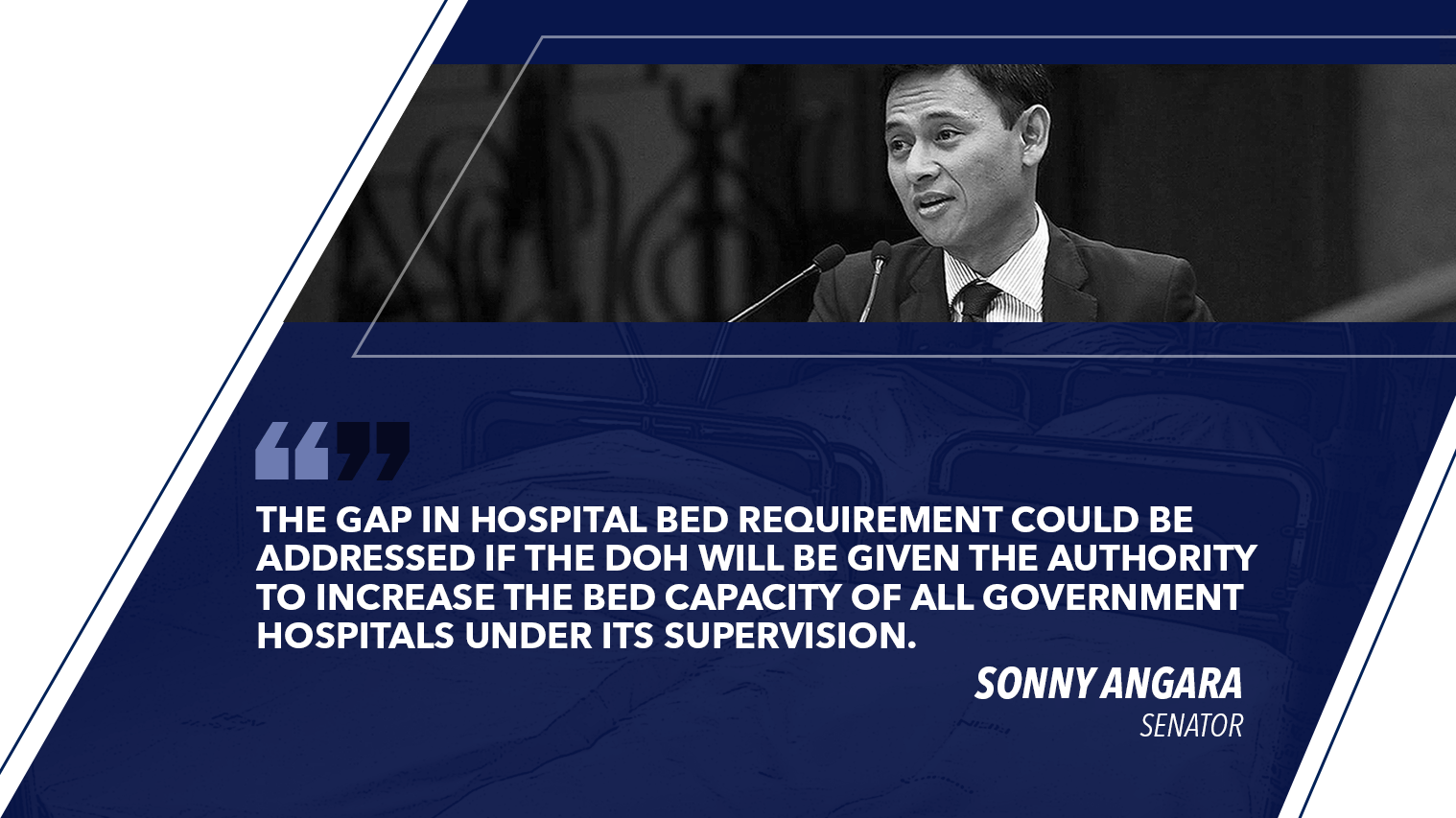Reelectionist Senator Sonny Angara stressed the need to upgrade the facilities and increase the bed capacity of government-run hospitals under the Department of Health (DOH) in anticipation of the influx of patients due to the impending implementation of the landmark universal health care (UHC) law.
“To accommodate more patients, government hospitals would need additional beds for increased admissions with the expected influx of new people into the health care system as a result of the UHC law,” said Angara, one of the authors of Republic Act 11223, which grants health coverage for all Filipinos.
The seasoned legislator said the gap in hospital bed requirement could be addressed if the DOH will be given the authority to increase the bed capacity of all government hospitals under its supervision, as proposed in Senate Bill 1682 he had filed.
Under the present set-up, the DOH can only increase the bed capacity of government-run hospitals and upgrade their service capability through legislation, and this worries Angara because it limits the access to medical and health services that every Filipino patient rightfully deserves.
“The DOH has the capacity and expertise to assess gaps in service delivery,” the veteran lawmaker pointed out. “By putting these government hospitals under the jurisdiction of the DOH, which manages these hospitals in the first place, shall increase the efficiency in the delivery of health services to sustain the increasing demands of patients.”
“The DOH has the capacity and expertise to assess gaps in service delivery.”
The senator made the proposal while in Leyte province, which is home to the Eastern Visayas Regional Medical Center (EVRMC), a 500-bed capacity Level III DOH hospital.
There is a pending bill in the House of Representatives seeking to upgrade the EVRMC rename it as the Eastern Visayas Medical Center, hire more medical staff, improve its services and facilities, and increase its bed capacity to 1,500.
At present, there are 70 DOH-retained public hospitals nationwide, of which 53 are general hospitals, 14 specialty hospitals, two infirmaries and one psychiatric facility which complement the devolved district, provincial and private hospitals in providing health care services.
Angara however lamented the low bed capacity in government hospitals, citing numbers in 2016 which showed that the average bed occupancy rate of all DOH hospitals was 136 percent and that 61 percent of these hospitals had bed occupancy higher than the authorized bed capacity.
“The mismatch in bed occupancy, compounded by lack of sufficient manpower and health services, hinders the quality health care for patients and makes it difficult to sustain the growing health needs of the population,” Angara said.
“The mismatch in bed occupancy hinders the quality health care for patients.”
To illustrate the poor distribution of hospital beds as well as the limited and dilapidated facilities particularly in poor areas, Angara cited data gathered by the Philippine National Statistics Authority in 2015 which showed that six out of 10 deaths were not attended to medically.
Citing a 2013 National Demographic and Health Survey, Angara said only one in every nine Filipinos visited a health facility or had sought medical advice or treatment.
“Unfortunately, with the increase in population, it is common for residents from far-flung provinces to travel for medical treatment purposes because of limited health services in their areas. The influx of patients leads to longer waiting time due to lack of available space in the hospital thus delaying the treatment,” he lamented.


